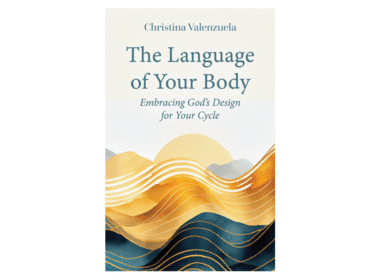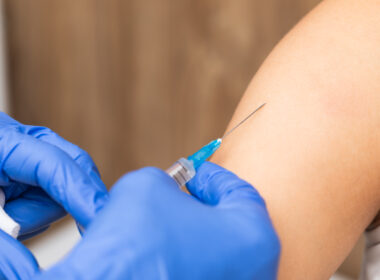In mid-April of this year, the Pill made headlines for its potential to….reduce muscle-tendon injuries? A study published in Medicine & Science in Sports & Exercise purportedly showed that women on hormonal contraception are less likely than men or naturally cycling women to sustain muscle-tendon injuries during exercise [1]. National Geographic proclaimed “Oral contraceptives may help lower the risk of sports injuries.” Similarly, U.S. News & World Report wrote, “Birth Control Pill Might Lower Odds for Sports Injuries.” If you’re a female athlete, you might be wondering, “Should I be on the Pill?”
It’s true that because hormonal birth control prevents ovulation (and the hormonal fluctuation that causes ovulation), HBC users have relatively stable hormone levels. It’s also true, as we reported previously, that natural, normal fluctuations in reproductive hormones, particularly estrogen, may predispose women to specific injuries like tendon or ligament tears (most famously, ACL or anterior cruciate ligament tears). But on the whole, which is healthier? Being on hormonal birth control or cycling–and specifically, ovulating–regularly?
Oral contraceptive users were four times less likely to report muscle tendon injury
For the aforementioned study, researchers at the University of Texas Southwestern Medical Center examined an orthopedic injury dataset from 126,801 patients, aged 18-39. Three groups had 42,267 patients each: men, female non-oral contraceptive users, and female oral contraceptive (OC) users. OC users had a prescription for one year before their muscle-tendon injury, and after the injury as well. Less than half of patient records indicated whether the injury was upper leg or lower leg.
The researchers found that overall, women on oral contraception were more than four times less likely (0.55% vs. 2.55%) to experience a lower-extremity (either upper-leg or lower-leg) muscle-tendon injury than women who were naturally cycling. Birth control users were also more than six times less likely to experience MTI injury than men (3.49%).
This research backs up a 2017 meta-analysis (study of studies) finding that the “2 largest and highest quality studies20,42;[on a closely related topic] both suggested a nearly 20% reduced risk for ACL injury while on oral contraceptives (OCs)” [2]. Of note, the first study was considered good quality while the second was considered fair quality.
Does this mean female athletes should go on the Pill to prevent injury?
A UT Southwestern press release quoted researcher and PhD candidate Luis Rodriguez as saying, “The results indicate that maintaining stable endogenous hormone levels through OC, or exposure to synthetic hormones in OC, may confer protective benefits against musculotendinous injuries in females.”
Natural Womanhood previously explained why the body’s own estrogen may simultaneously reduce muscle injury risk while increasing tendon or ligament injury risk. To briefly recap, estrogen in particular plays a significant role in bone growth and development, and heavily affects the flexibility or stiffness of connective tendons and ligaments (progesterone and relaxin also play lesser roles). The concentration of estrogen and ligament flexibility increase proportionally; the more estrogen present in the body, the more flexible the ligaments and tendons are. Biologically, then, it is plausible that muscle-tendon injury risk would be somewhat lower in women who don’t experience significant estrogen fluctuations, as naturally cycling women do.
….Not so fast. The Pill also decreases bone density
First, the study also found that women aged 20-24 who were on the Pill were more likely, not less likely, than naturally cycling (non-OC) women to experience muscle-tendon injury (MTI).
Still, two things should give a woman pause before considering taking the Pill as a preventive against sports injuries. First, the study also found that women aged 20-24 who were on the Pill were more likely, not less likely, than naturally cycling (non-OC) women to experience muscle-tendon injury (MTI). Notably, collegiate and elite level athletes are likely to be in this age range. The finding that OC users were less likely to experience MTI than naturally cycling women came specifically from the 30-34 and 35-39 year old age groups, which are far less likely to include competitive, professional, or elite level female athletes. There was no significant difference in MTI between OC and non-OC users aged 18-19 or 25-29.
Second, as the UT Southwestern researchers acknowledged, hormonal birth control use, including oral contraceptive use, doesn’t just cause bone density growth to stall. It actively decreases bone density in women in their teens and twenties, a time when they should be achieving their peak bone density mass [3][4].
Should young women consider going on the Pill to reduce their already-low overall risk of muscle-tendon injuries, knowing that their risk of bone fractures and osteoporosis increases by doing so? Cassondra Moriarty, in another article at Natural Womanhood, noted, “If you’re not ovulating during your prime reproductive years, your bone density will be negatively impacted, and those effects will manifest in your post-menopausal years”.
Hormonal birth control comes with other risks, too
Increasingly, we’re gaining understanding of the long-term effects of oral contraception. Periods (and the naturally occurring cyclical hormonal fluctuations) are crucial for a woman’s current and future bone health and density. Young women and teens using oral contraception don’t experience ovulation and thus miss out on its bone, brain, breast, immune, heart, and pregnancy prep benefits.
What’s more, hormonal birth control use roughly doubles blood clot risk, increases bodywide inflammation, may cause liver tumors, raises breast cancer risk, and may trigger mental health issues, especially in young users. These risks beg the question, no matter what the headlines surrounding the recent UT Southwestern study claim: is a slightly lower risk of muscle-tendon injuries worth it?
Additional Reading:
Do female athletes perform worse during their periods?
Are you more likely to get injured during your period?











